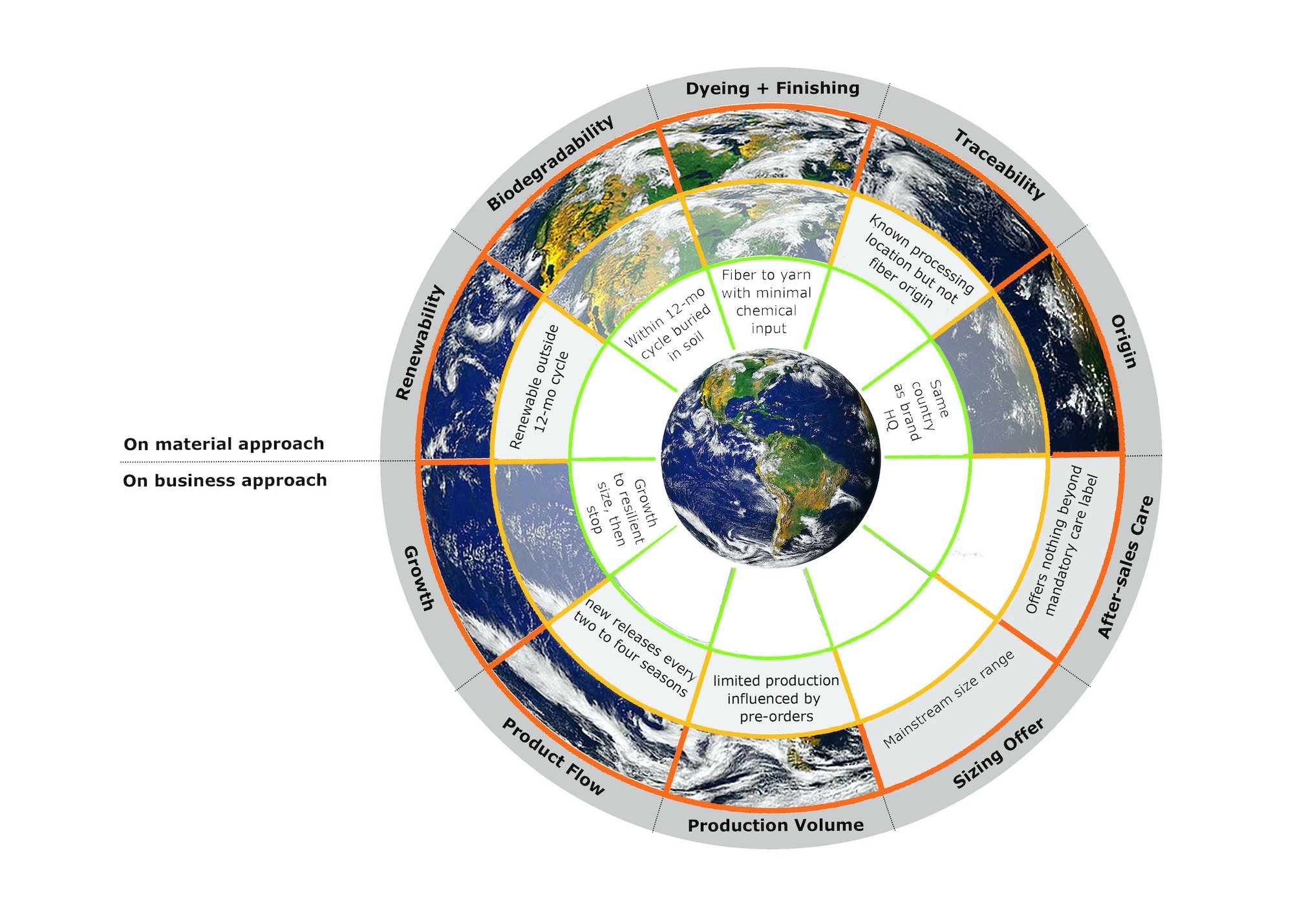Matrixes, Policy and Some Possible Ways Forward
Introducing a spiderogram tool from the Indexes Working Group – an alternative way of measuring sustainability in fashion – and announcing the merger of three working groups.
As some of you may have registered, the Indexes Working Group hosted the UCRF Forum on December 13th, with the title Serendipity, Slow and Systemic change. The event was arranged on short notice, and the Forum opened up a discussion how the Indexes group could continue its work, and how this could interfere with or compliment two other groups: Fashion & Politics, and Wellbeing and Degrowth in Fashion.
For those who might not know, the Indexes group has been looking at the impact of LCA-based tools used to measure sustainability in fashion, such as the HIGG MSI, EU’s Product Environmental Footprint for quite some time. During this work, we also decided to take a more pro-active role and therefore started a journey of exploring an alternative approach and developed a matrix spiderogram.
But first, back to the Forum.
Ten people participated throughout the Forum, which touched upon the issues we had discussed surrounding the Higg MSI (Material Sustainability Index), EU’s PEFCR (Product Environmental Footprint Category Rules), the ruling by the Norwegian Consumer authority against the consumer-facing Higg Co label (based mostly on the MSI) and the ongoing interaction some of UCRF’s members are having with governing bodies and policy makers in the EU on a more proactive approach within the confines of EU’s Textile Strategy.
The latter is a suggestion put forward by member Professor Ingun Grimstad Klepp on a “targeted” rather than an extended producer responsibility.
The suggestion is gaining attention, especially as it is based on research and unique knowledge amassed by Consumption Research Norway. This has not been discussed by the Indexes Working Group, however, it goes more to the themes for the Fashion and Politics, and Wellness and Degrowth groups, which was why we brought it up in the Forum.
Entering the policy field, when criticizing the tools and labels policy-makers seem to find the easiest to adopt, based on industry-recommendations, and being met with “it’s better with imperfect tools, even if they end up making bad recommendations, than no tools at all” - we have been working on the mentioned spiderogram tool for small and micro-sized businesses; those who feel Higg’s suite of tools does not fit how they operate.
We have developed a “coarse mesh”, with a plan to go further with a “fine mesh” once we had feedback on the first version. The idea now is that since the Sustainable Apparel Coalition has been touting that lack of perfection shouldn’t get in the way of using a tool, and the general groan from the industry that even if Higg was an imperfect tool, it was the only tool they had – we therefore have chosen to share “our” spiderogram matrix as an open-source tool for anyone to test and to offer us feedback as to how it works. Or doesn’t.
The spiderogram matrix, which you are free to experiment with and trial.
You will notice that the focus is not so much on the measurable impacts on the fiber-level, such as climate change and water- or land-use. The main reason for this is that we do not believe that the current measuring methods offer good enough data and that the fiber only counts for between 12-15% of the total impact. Thus the differences between fibers will not be significant. Other issues, such as renewability, microplastics and biodegradability that are not included today, however, will. Even if we cannot currently measure them.
One of the Indexes Working Group members did a test of the spiderogram in order to show how a fictitious company could end up looking.
We therefore ask for your input. We also have a more detailed document we can share with you, if you are interested, working towards a “fine mesh”. This goes beyond the “cheat sheet” that we have added here for more context.
On February 16th members of the Indexes group met with members of the Wellbeing and Degrowth in Fashion group and the Policy & Fashion group. We agreed to converge our forces, as we are all stretching ourselves a little too thin and several were members in all three groups. As we are all passionate about and want to move forward on many of the same issues, we have decided to become the Policies & Social Change group, and will administer several smaller projects where those who want to work on specific issues engage for a limited time period. This, we hope, will make it easier for more to also become involved - as it will be easier to cherry-pick exactly where you want to use your time and competences.




